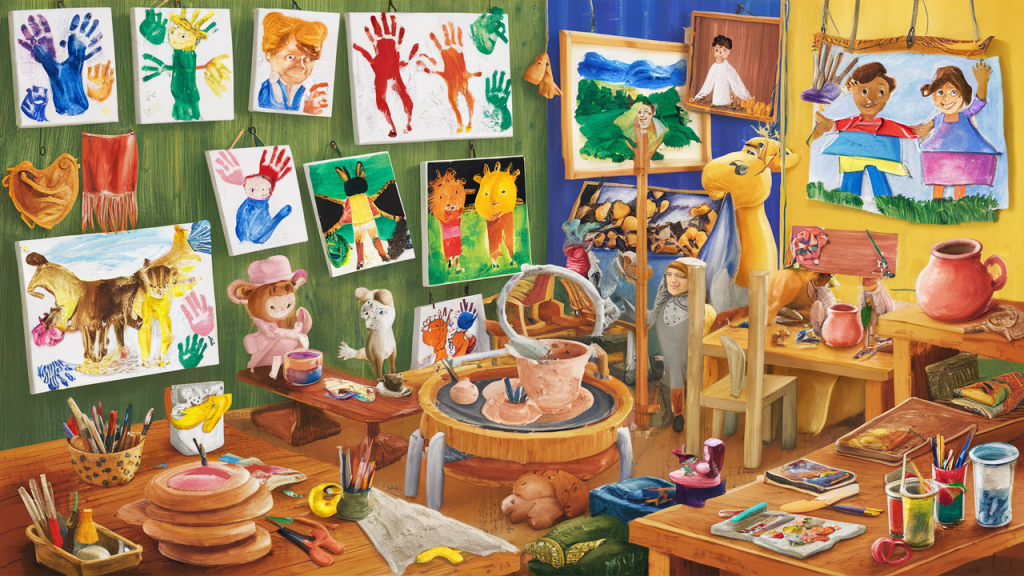Art activities are a fun and creative way to express yourself, no matter what your age is.
Whether you have a young child learning to draw or an adult looking for a new hobby, there are endless ways to improve your creativity.
Art can help improve focus, boost confidence, and even reduce stress.
In this blog, I’ll cover various art activities for all ages, from simple crafts for kids to more advanced projects for teens and adults.
You’ll find ideas for individual projects, group activities, and even ways to make art a part of your daily routine.
So, if you want to try something new, relax after a long day, or teach kids something fun, there’s an art activity for you.
Importance of Art Activities
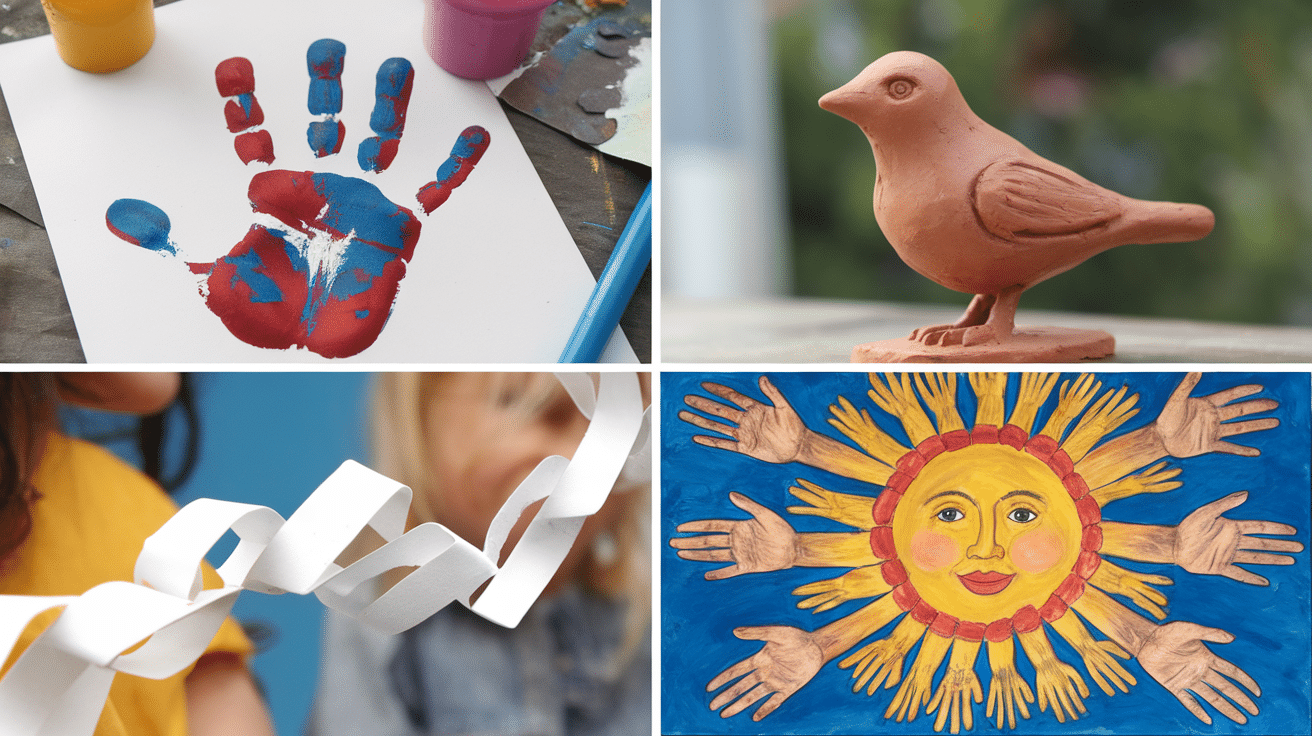
Art is much more than just drawing or painting. It’s a way to express yourself, share your feelings, and show the world what you see in a unique way.
For kids, art helps with creativity and problem-solving. It improves fine motor skills, like holding a pencil or cutting shapes. For teens and adults, art can be a way to relax, reduce stress, and even explore tough feelings.
Art also teaches us to think differently, experiment, and keep trying even when things don’t go as planned. Plus, it’s a great way to share your ideas with others.
If you’re drawing, painting, or making something new, art can make you feel proud, happy, and connected to the world.
Benefits of Engaging in Art Activities
Engaging in art activities offers more than just fun—it benefits both your mind and body. Whether you’re drawing, painting, sculpting, or doing any other creative activity, here’s how art can improve your life:
1. Boosts Creativity: Art helps you think outside the box. When you work on a project, you’re forced to come up with new ideas and solutions. This boosts your creativity and encourages you to try new things.
2. Reduces Stress and Anxiety: Working on an art project can be calming. Creating art through coloring, painting, or drawing helps relax your mind and takes your focus off any worries or stress you might be feeling.
3. Improves Focus and Concentration: When creating something, your attention is focused on the task at hand. This helps you practice staying on task and improving your concentration skills.
4. Boosts Self-Confidence: Completing an art project, big or small, gives you a sense of accomplishment. Being proud of what you’ve created can increase your self-esteem and help you feel more confident in your abilities.
5. Improves Fine Motor Skills: When drawing, painting, or sculpting, you use your hands and fingers in ways that help improve your fine motor skills. These skills are important for writing, typing, and using utensils.
6. Promotes Relaxation and Mindfulness: Art can be a form of mindfulness, where you focus on the moment and let go of distractions. This mindfulness helps reduce stress and improve mental health.
Engaging in art activities offers physical, emotional, and mental benefits that help improve your well-being. Whether you’re a beginner or an experienced artist, there’s always something to learn and gain from the creative process.
Fun Art Activities for Young Children
Young children’s art activities are about exploration, fun, and creativity.
These activities help children develop fine motor skills, express emotions, and learn about the world around them. Here are some fun ideas:
1. Finger Painting

Finger painting is a classic and fun activity that lets kids explore colors and textures. They can use their fingers to create designs, mix colors, and experiment with how the paint feels.
This activity encourages creativity and helps with hand-eye coordination.
2. Playdough Creations
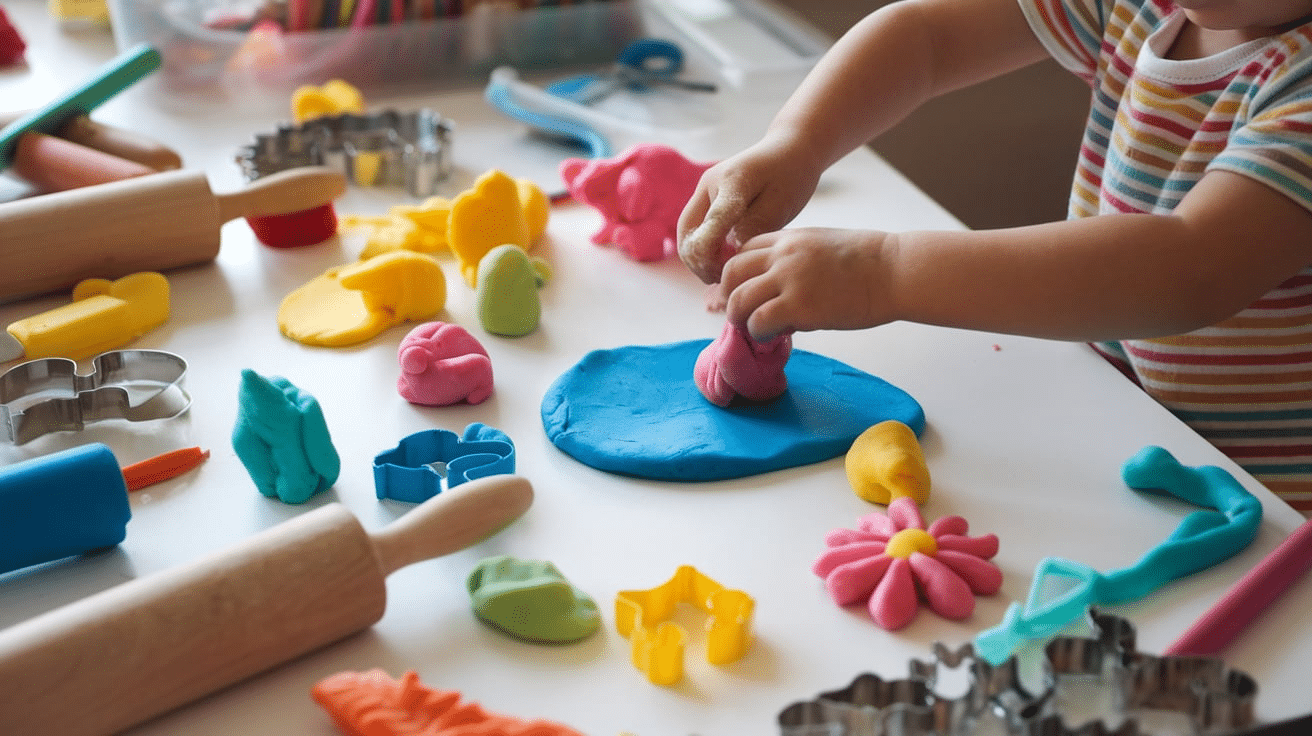
Playdough is a great tool for building shapes and structures. Kids can make animals, houses, or anything their imagination can come up with.
This activity helps develop their fine motor skills as they roll, squeeze, and shape the dough.
3. Collage Making
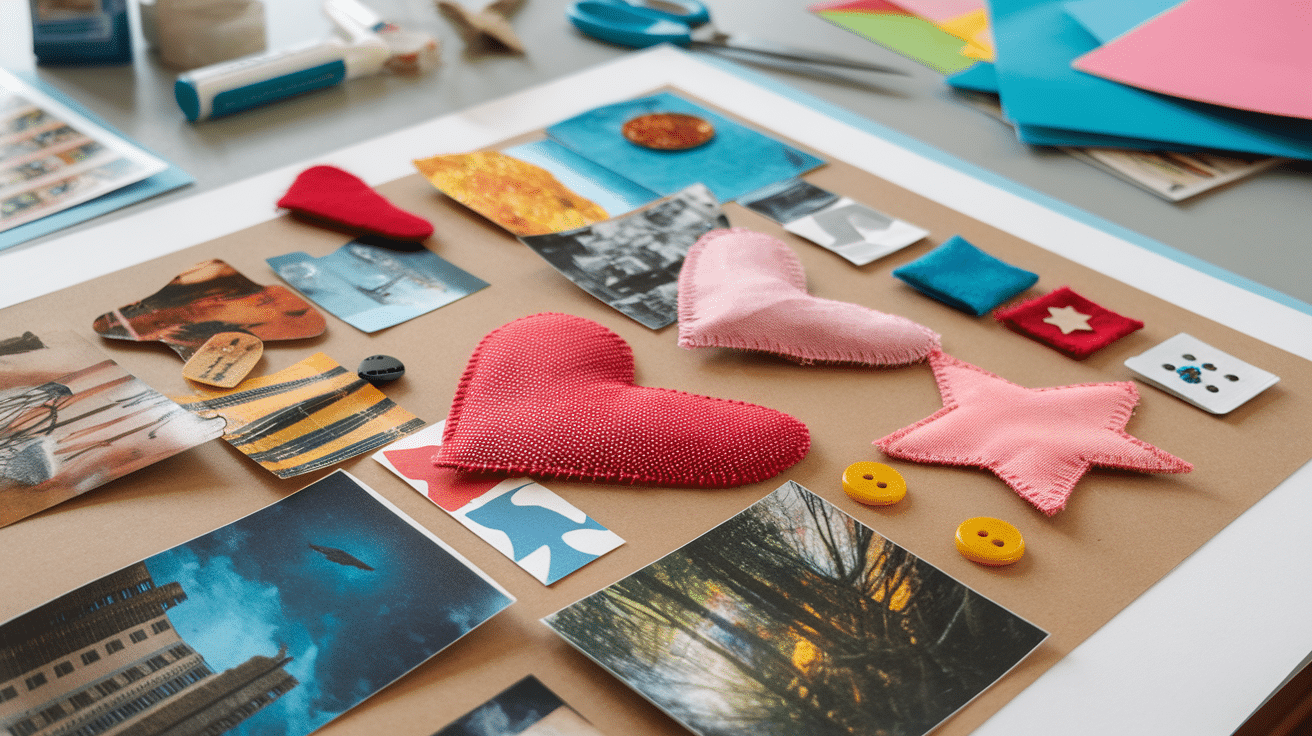
Give kids magazines, colored paper, fabric, or buttons, and have them glue the pieces onto a large sheet of paper to create their own collage.
This activity encourages cutting skills, creativity, and problem-solving as they arrange their materials.
4. Nature Art
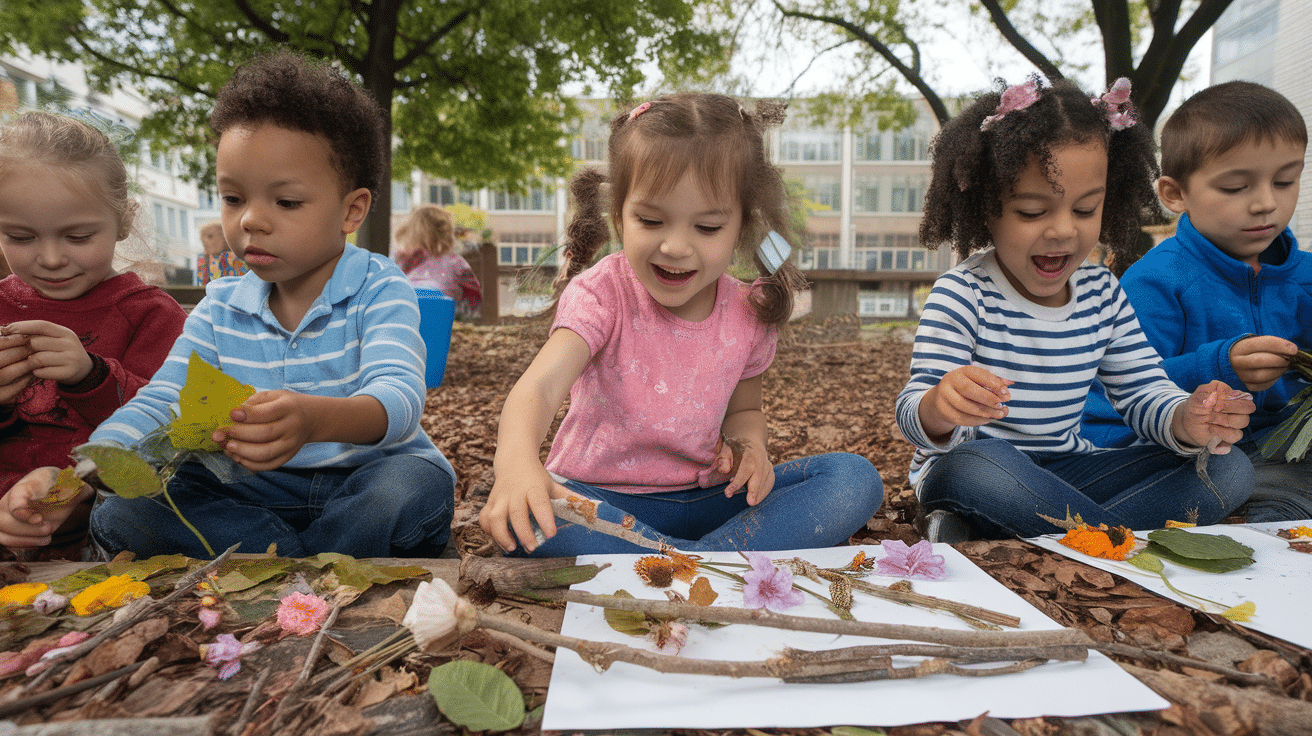
Take kids outside and collect leaves, sticks, or flowers. Have them use these natural materials to create art—like a leaf print or a nature collage.
They can also use the materials to create textured paintings or sculptures. This activity helps kids learn about nature and use their imagination while developing an appreciation for the environment.
5. Simple Shape Art
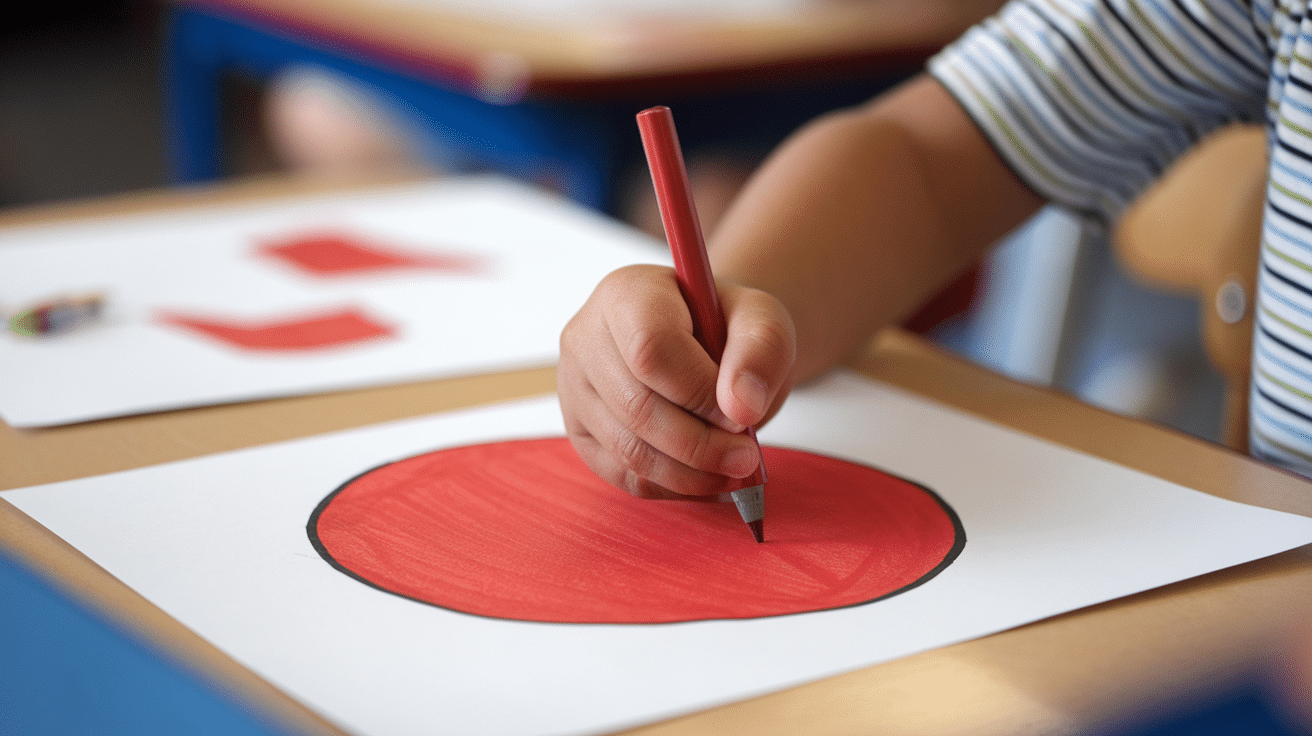
Teach children how to draw and create simple shapes like circles, squares, and triangles. Then, they can turn those shapes into animals, objects, or faces.
This helps develop their ability to see and create patterns while also improving their understanding of proportions and shapes in the world around them.
Fun Art Activities for School-Aged Children
School-aged children enjoy more detailed and focused activities. These projects allow them to build on basic skills while developing their own style. Here are some great ideas:
6. Watercolor Painting
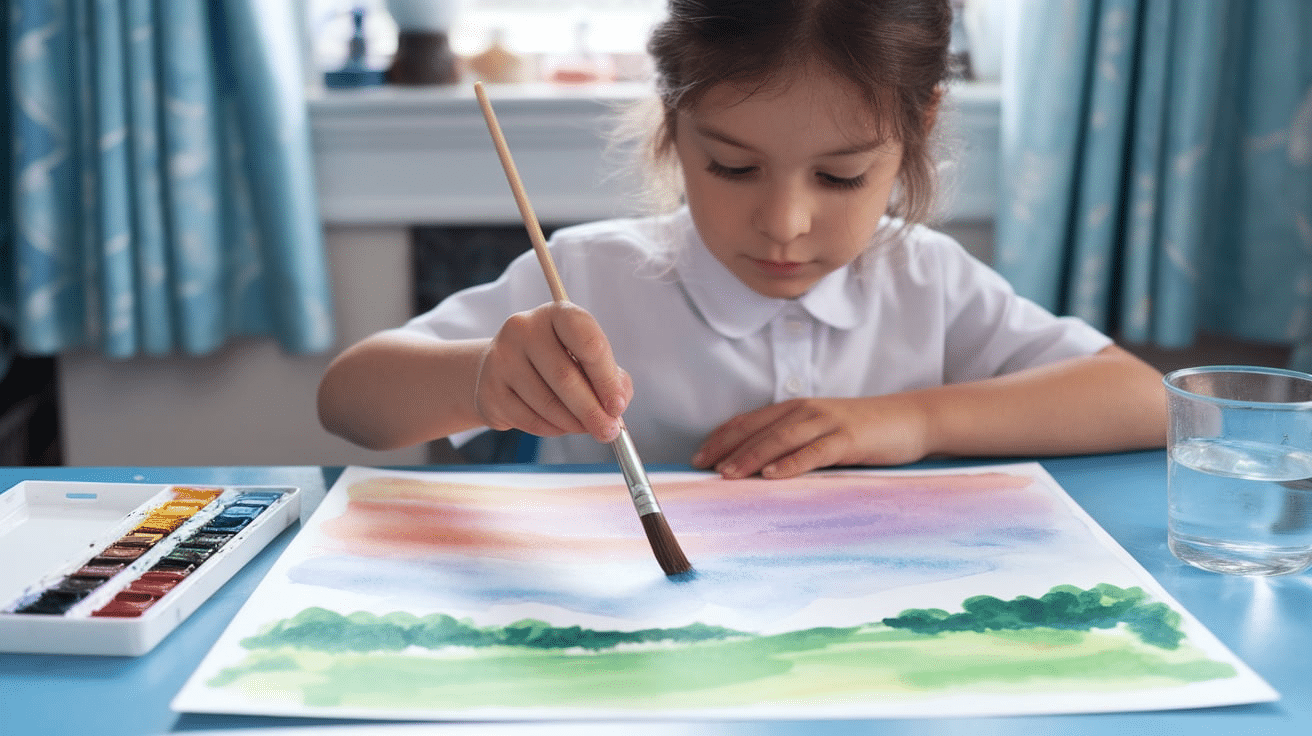
Kids can experiment with watercolor paints to create beautiful, soft art. They can paint simple landscapes or abstract designs, exploring how the colors blend together.
This helps improve their brush control and understanding of color mixing and teaches them how different water-to-paint ratios affect the final result.
7. Clay Sculpting
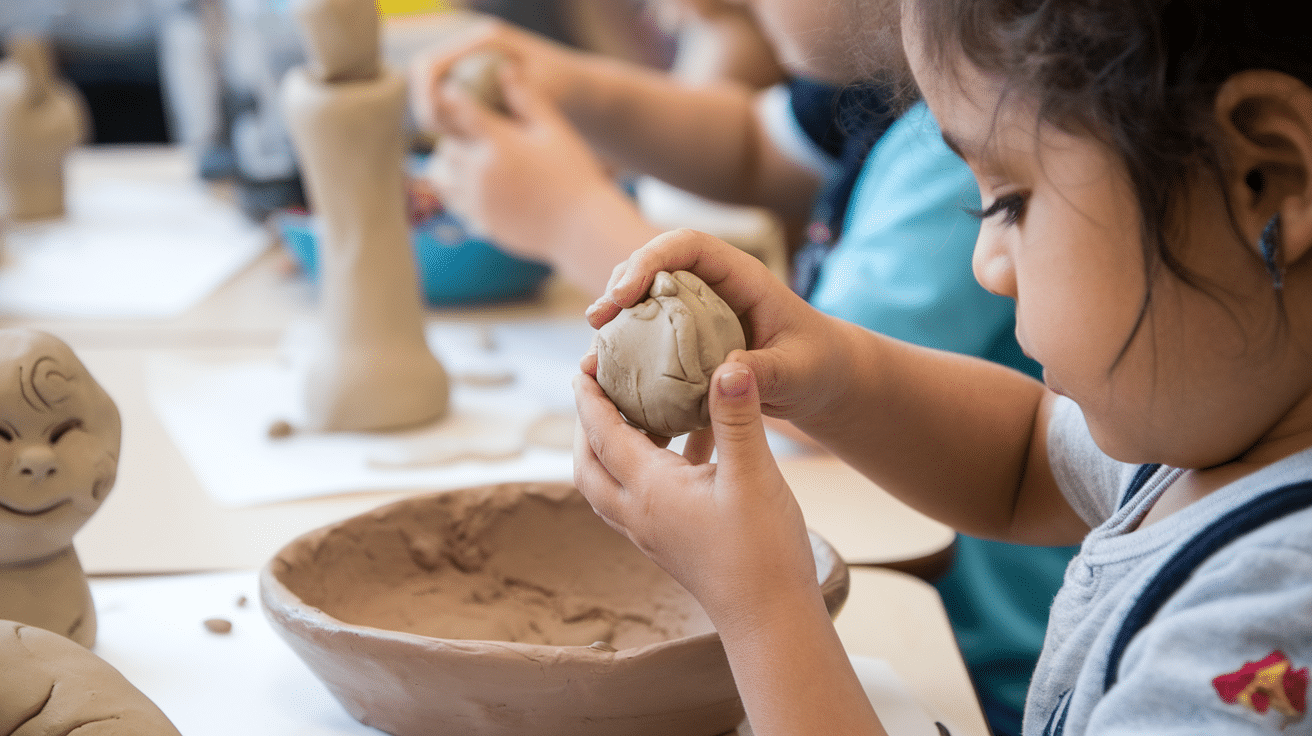
Introduce kids to modeling clay or air-dry clay to create fun sculptures. They can make animals, bowls, or even abstract shapes, using their hands to mold and shape the clay into whatever they imagine.
They’ll also learn about texture and sculpting techniques as they work with the clay, helping develop their artistic and problem-solving abilities.
8. DIY T-Shirt Art
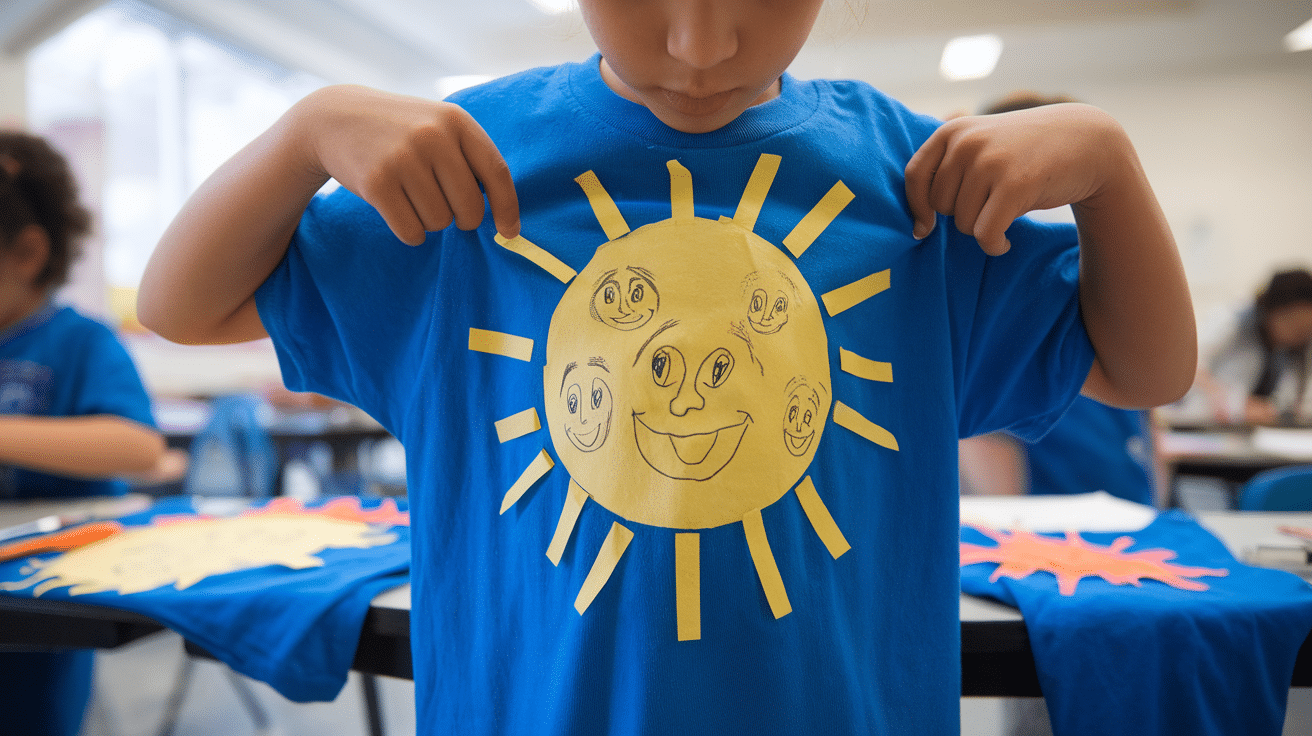
Kids can create their own custom T-shirt designs using fabric paint or markers. They can draw or paint fun shapes, animals, or even their names on plain shirts.
This is a great way for kids to express themselves while practicing precision with markers.
9. Paper Mâché Projects
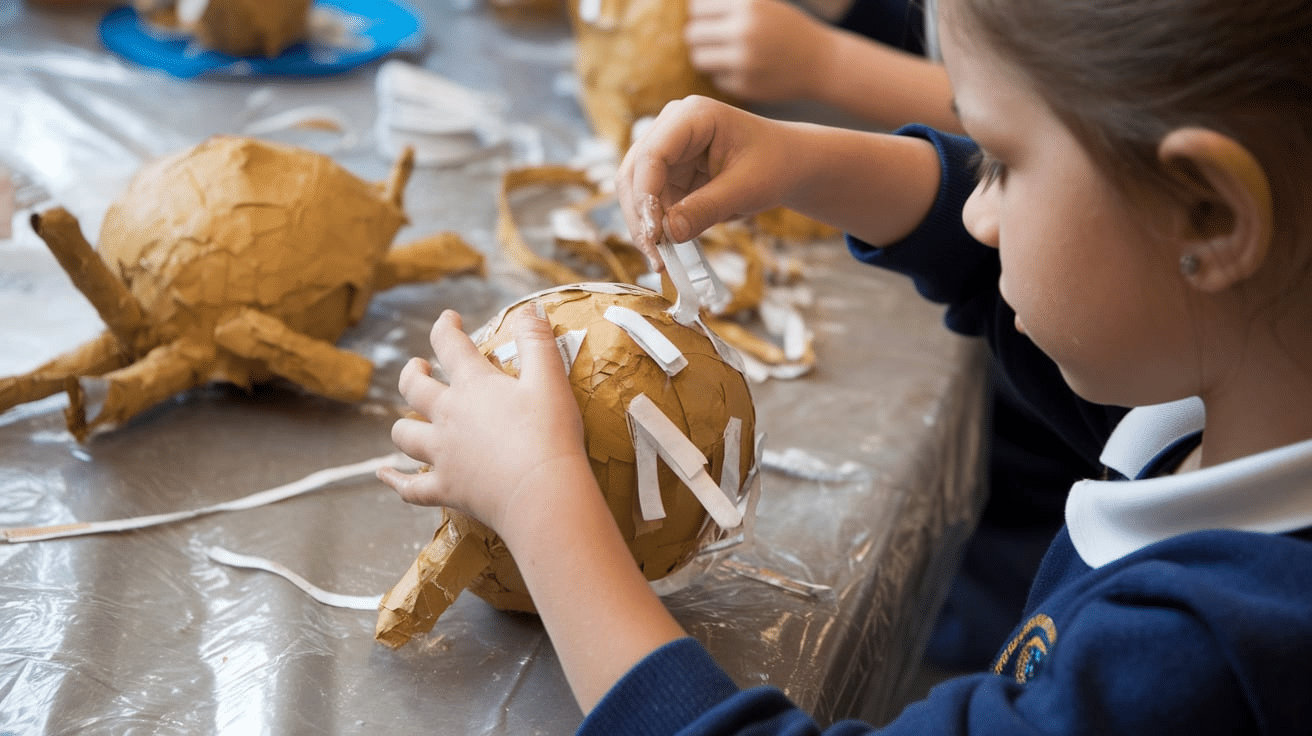
Making paper mâché sculptures can be a fun and messy activity. Kids can create masks, animals, or other shapes by layering paper strips on a balloon or wireframe.
This helps improve their understanding of structure and texture while also teaching them about patience and layering materials to create solid shapes.
10. Pop Art Style Drawing
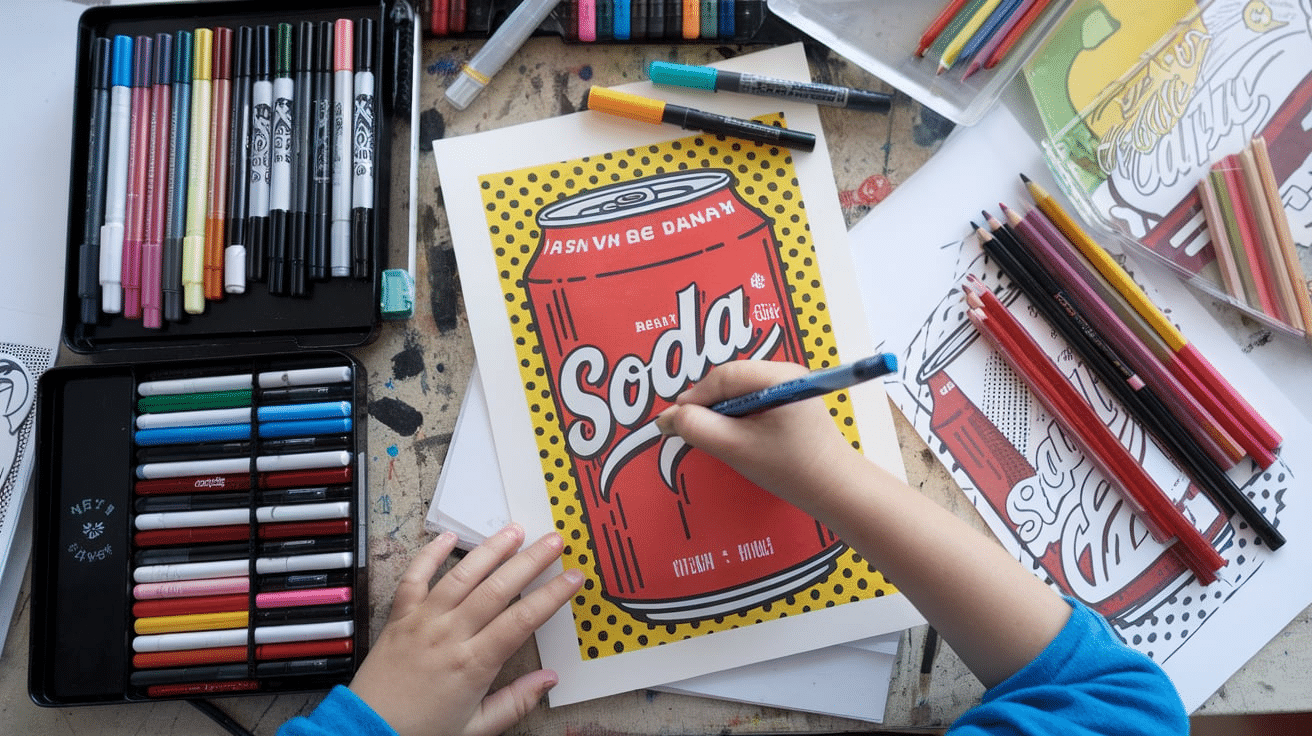
Introduce kids to Pop Art by having them recreate everyday objects (like food or toys) in a bold, colorful style. They can use bright colors and thick lines to mimic the style of famous artists like Andy Warhol.
This activity helps them explore the idea of art as a reflection of popular culture while encouraging them to think about how common objects can be transformed into art.
Fun Art Activities for Teenagers
Teenagers enjoy more advanced techniques that help them refine their skills. These activities encourage artistic expression and allow teens to develop their own style. Here are some great ideas:
11. Digital Art Creation
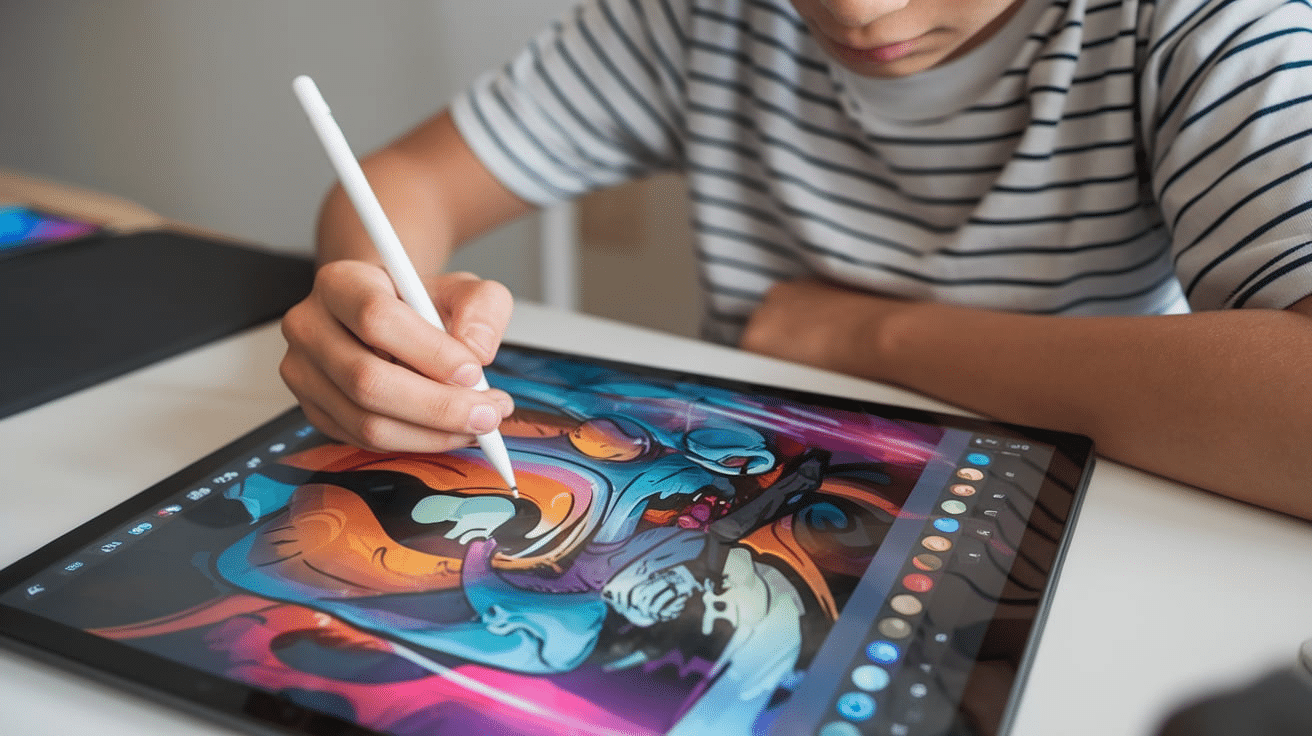
Teens can explore digital drawing apps like Procreate or Photoshop to create their own digital masterpieces. Whether it’s illustration, animation, or photo manipulation, this activity helps them explore modern art forms.
It also allows them to experiment with different styles and digital techniques, expanding their creativity in digital design.
12. Photography Projects
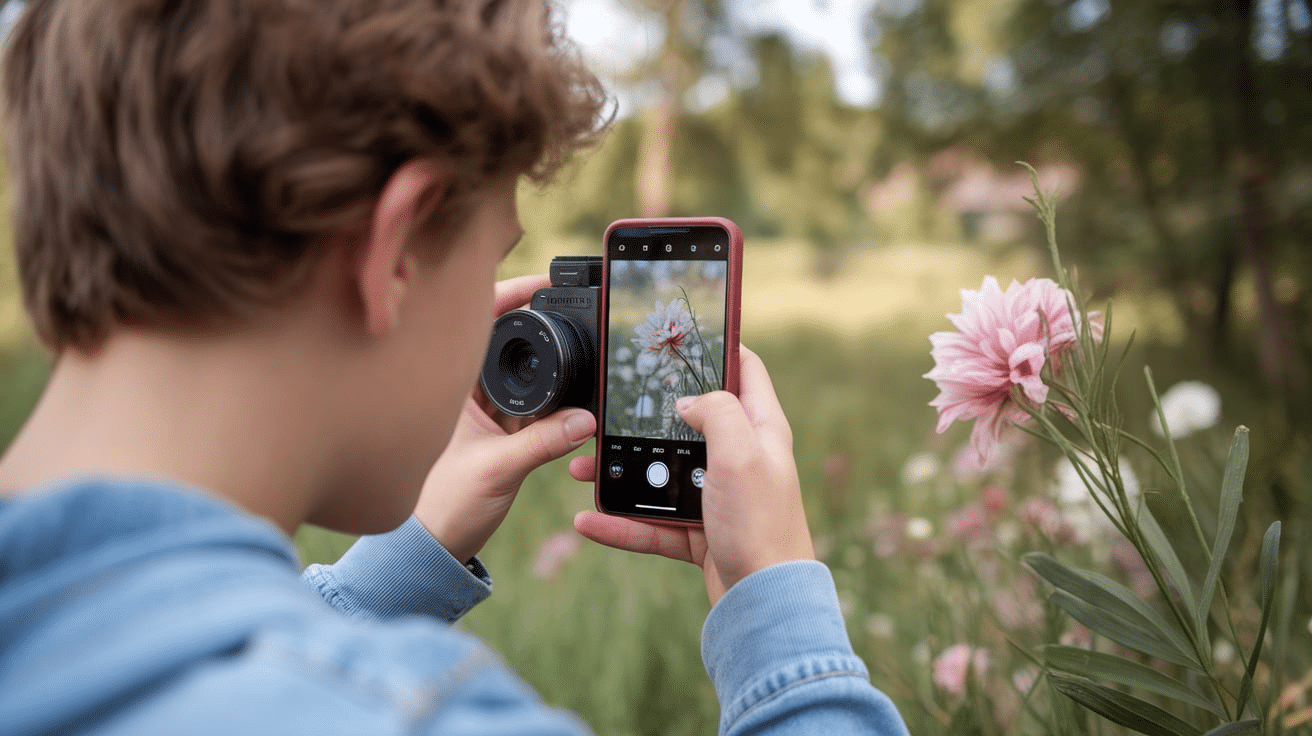
Give teens a camera or smartphone and have them focus on a specific theme, like nature, portraits, or still life. This helps them learn about framing, lighting, and perspective, all important skills for budding photographers.
They’ll also gain an understanding of composition and storytelling, allowing them to capture moments with intention and creativity.
13. Mixed Media Art
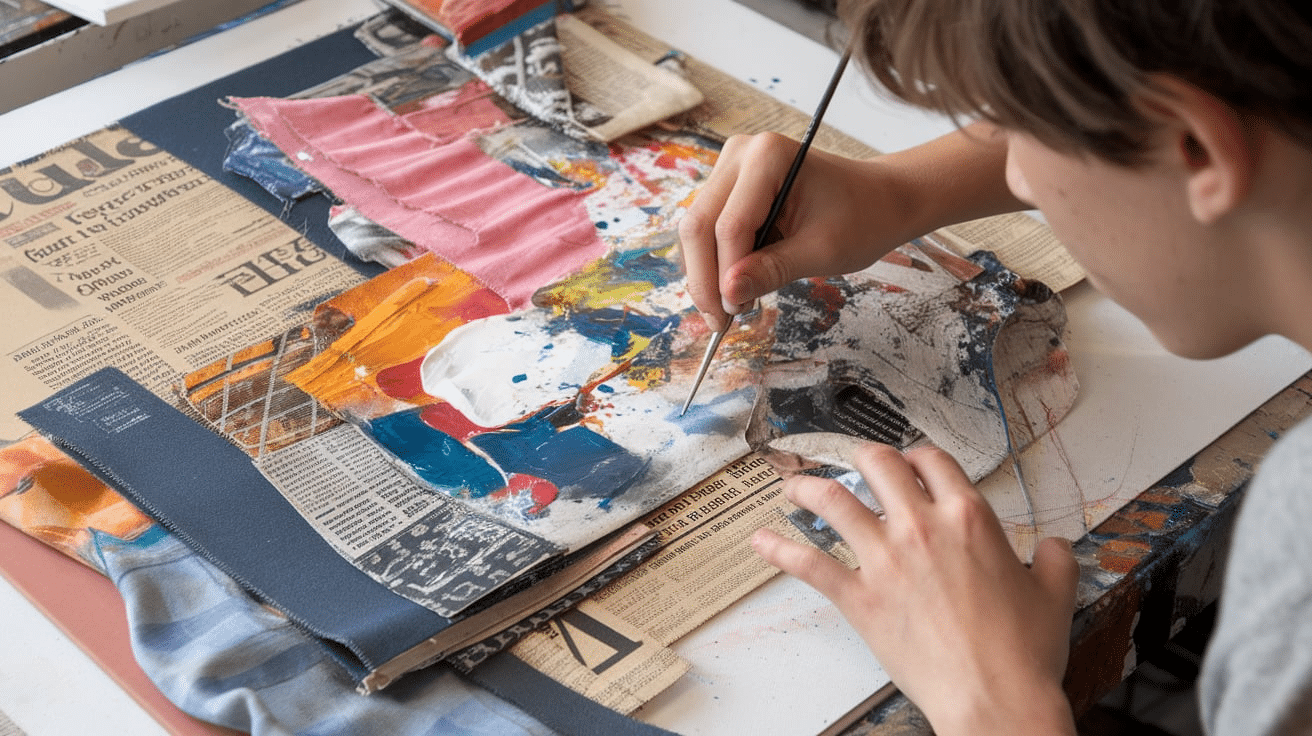
Teens can combine different materials, like paint, fabric, and paper, to create a textured and dynamic piece of art.
They can express emotions or stories through their artwork, blending different techniques to develop their unique voice.
This allows them to explore new textures and dimensions in their art, making their work stand out with depth and variety.
14. Graffiti and Street Art
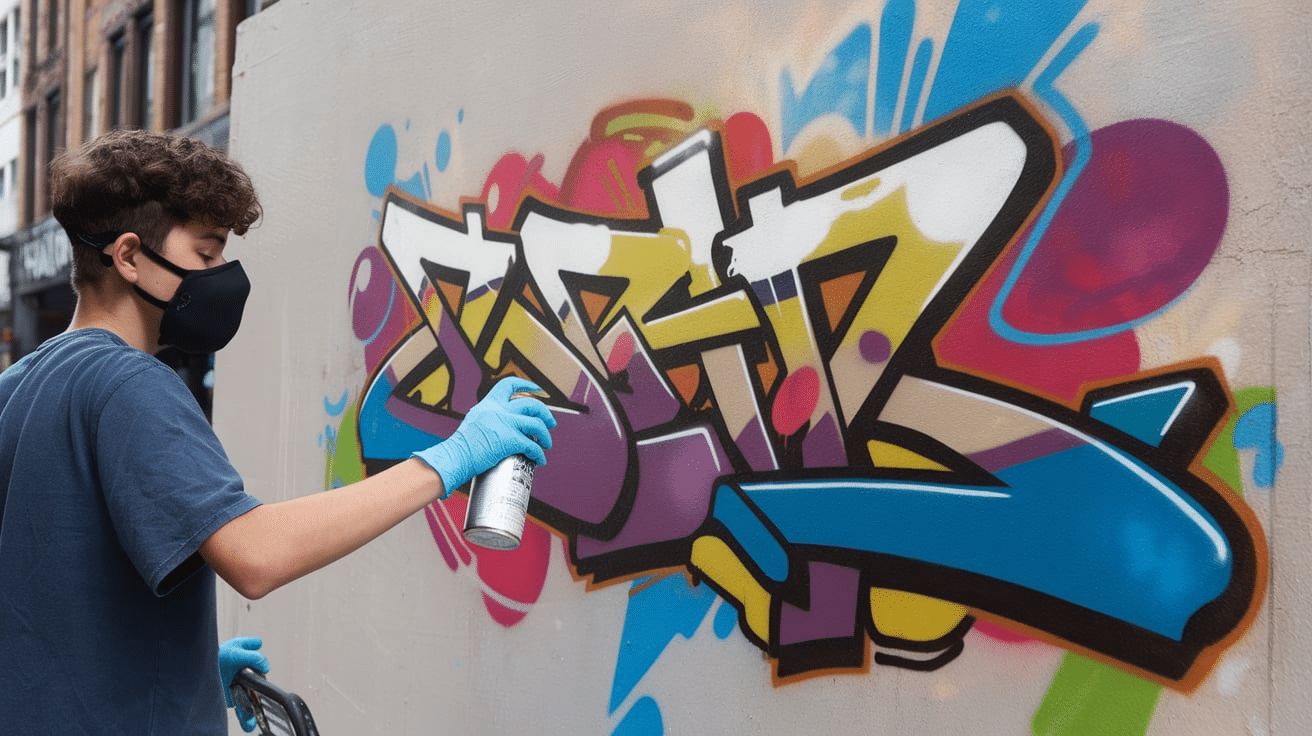
Introduce teens to graffiti art by having them design a mural or make spray paint-style art using stencils.
This activity teaches them about color theory, composition, and different art techniques. It also helps them understand the importance of urban culture and public art.
15. Fashion Illustration
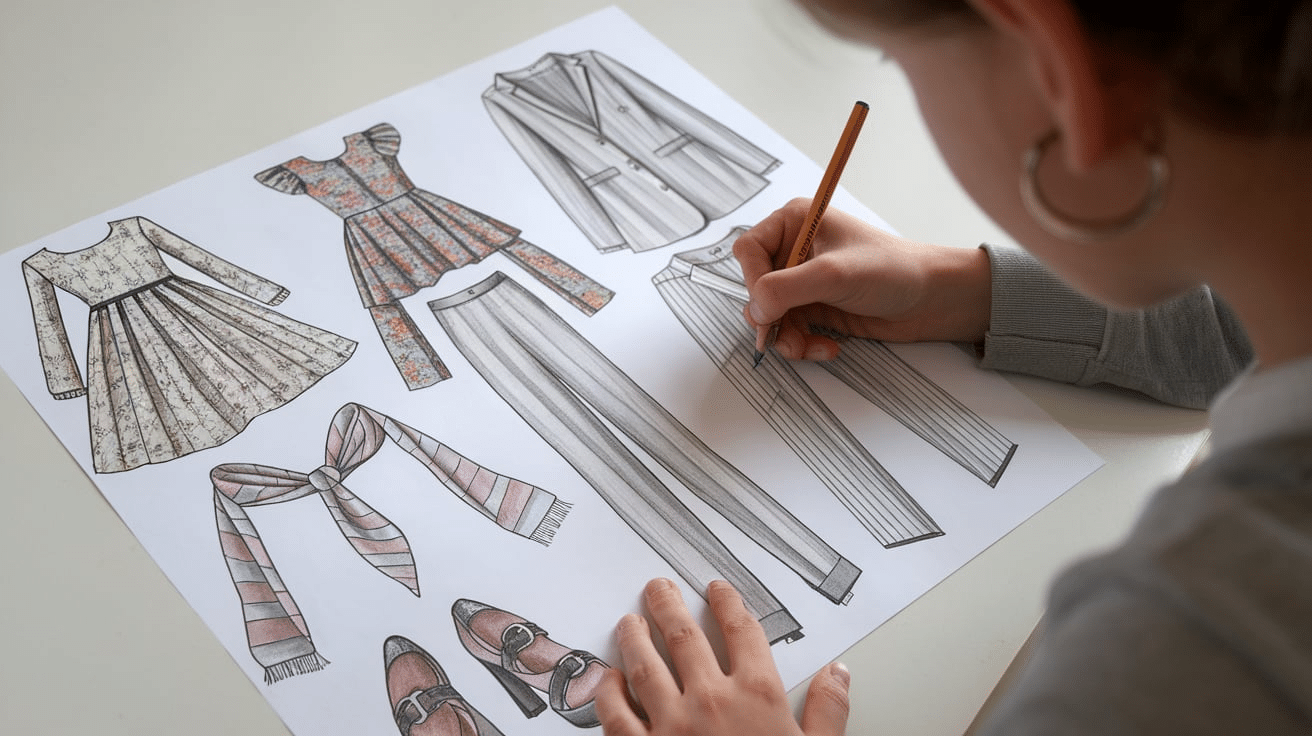
Teens interested in fashion can try fashion sketching. They can design their own clothing line or illustrate different outfits.
This activity encourages teens to consider style, design, and trends. It also challenges them to develop their drawing skills and creativity while learning about the fashion industry and its visual language.
Fun Art Activities for Adults
Adults can dive deeper into complex art forms and explore their creative potential. These activities can be relaxing, challenging, and rewarding. Here are some ideas:
16. Acrylic Painting
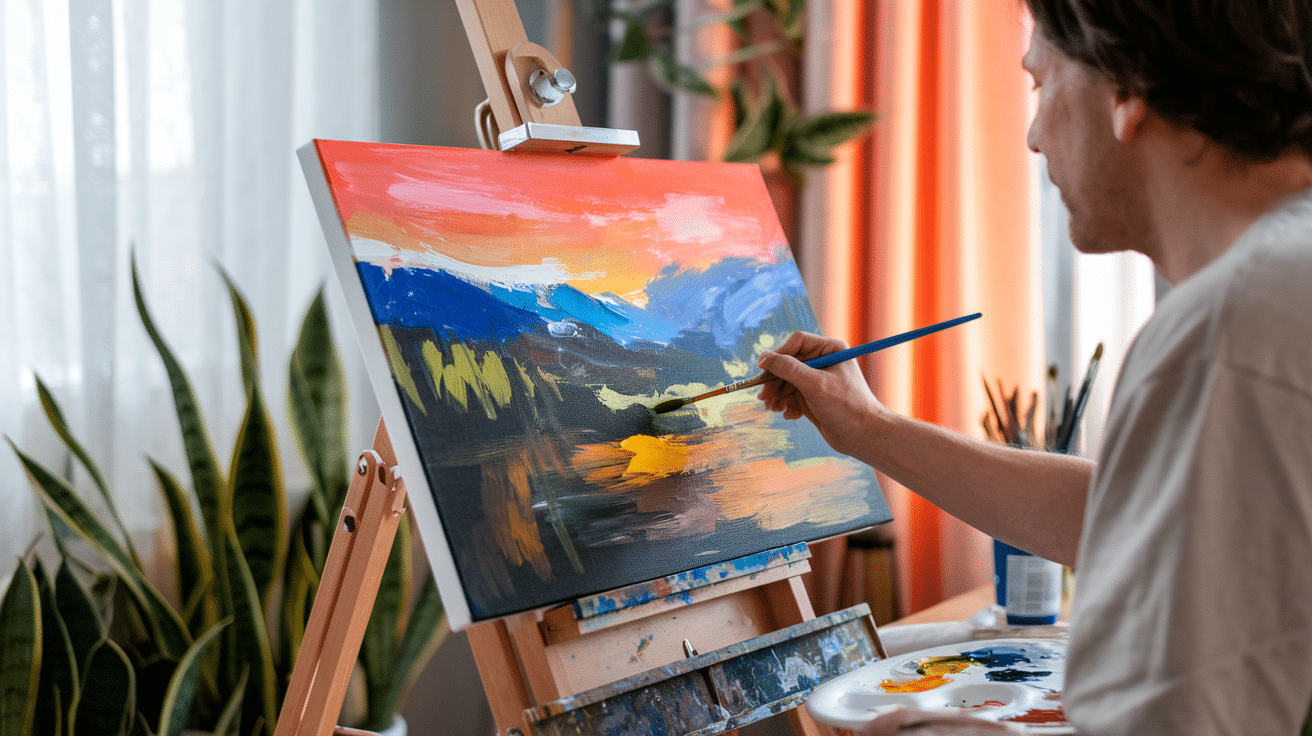
Acrylic painting allows adults to explore different styles like abstract art, landscapes, or portraiture. Acrylic paints dry quickly, perfect for experimenting with layers and textures. It’s a great way to relax and express oneself.
Acrylics are versatile and can be used for both bold, vibrant works or subtle, layered effects.
17. Pottery or Ceramics
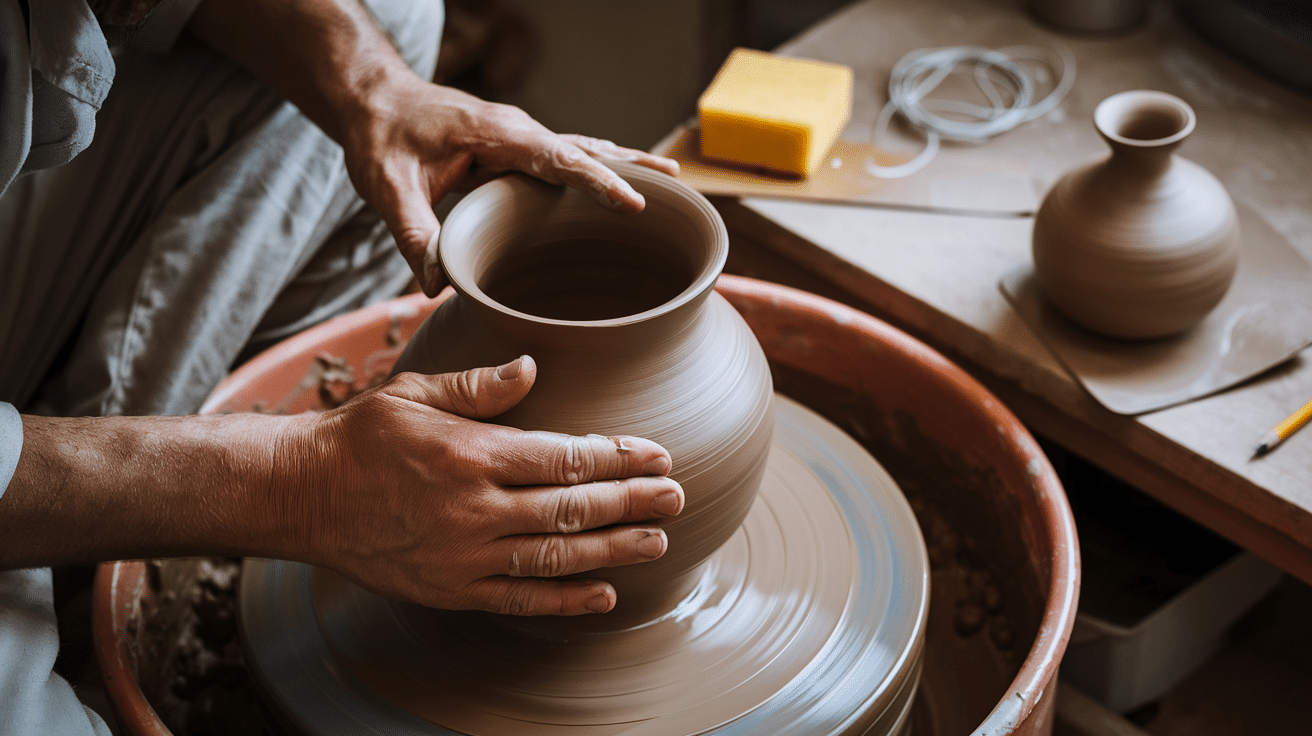
Working with clay offers a hands-on, therapeutic experience. Adults can try making functional pieces like mugs or bowls or create artistic sculptures.
This activity helps improve patience and provides a sense of accomplishment when the piece is finished.
18. Calligraphy
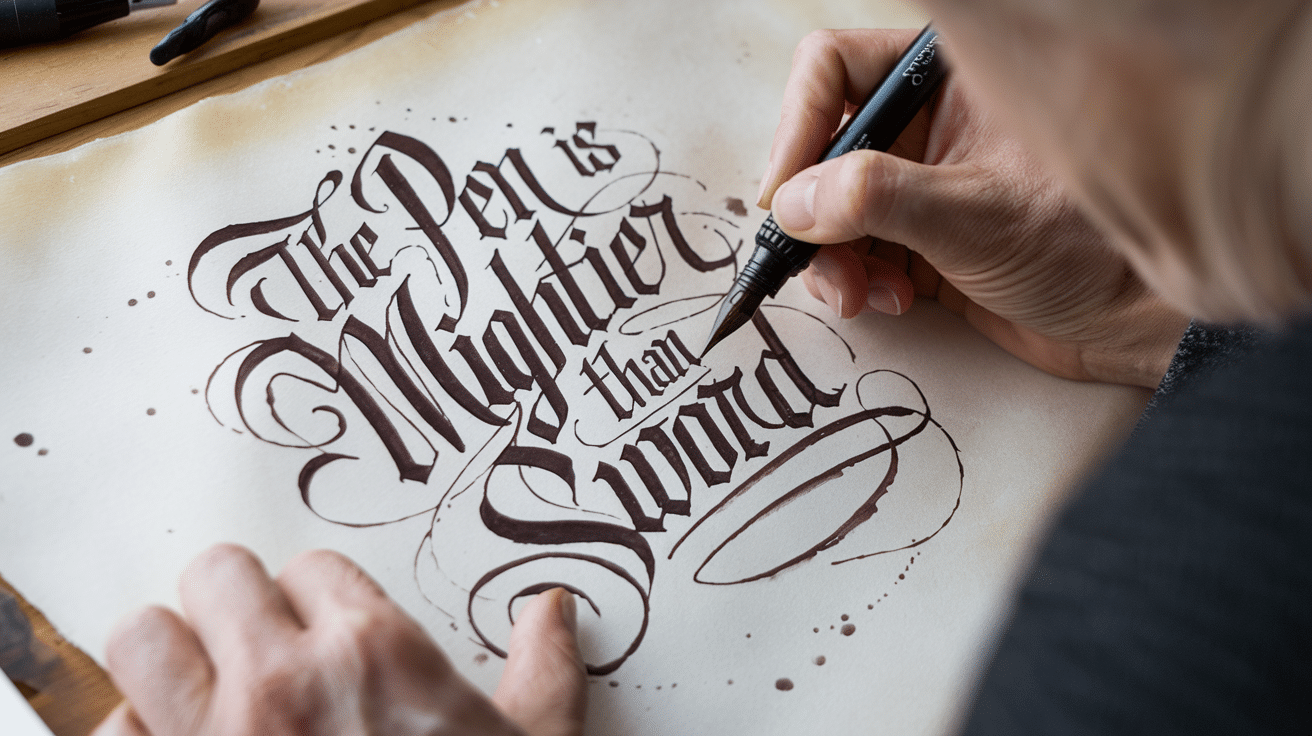
They can create cards, quotes, or invitations with special pens or brushes. This activity enhances focus and provides a creative way to express words.
Calligraphy also promotes fine motor skills and encourages an appreciation for artful, handwritten letters in a digital world.
19. Woodworking or Carving
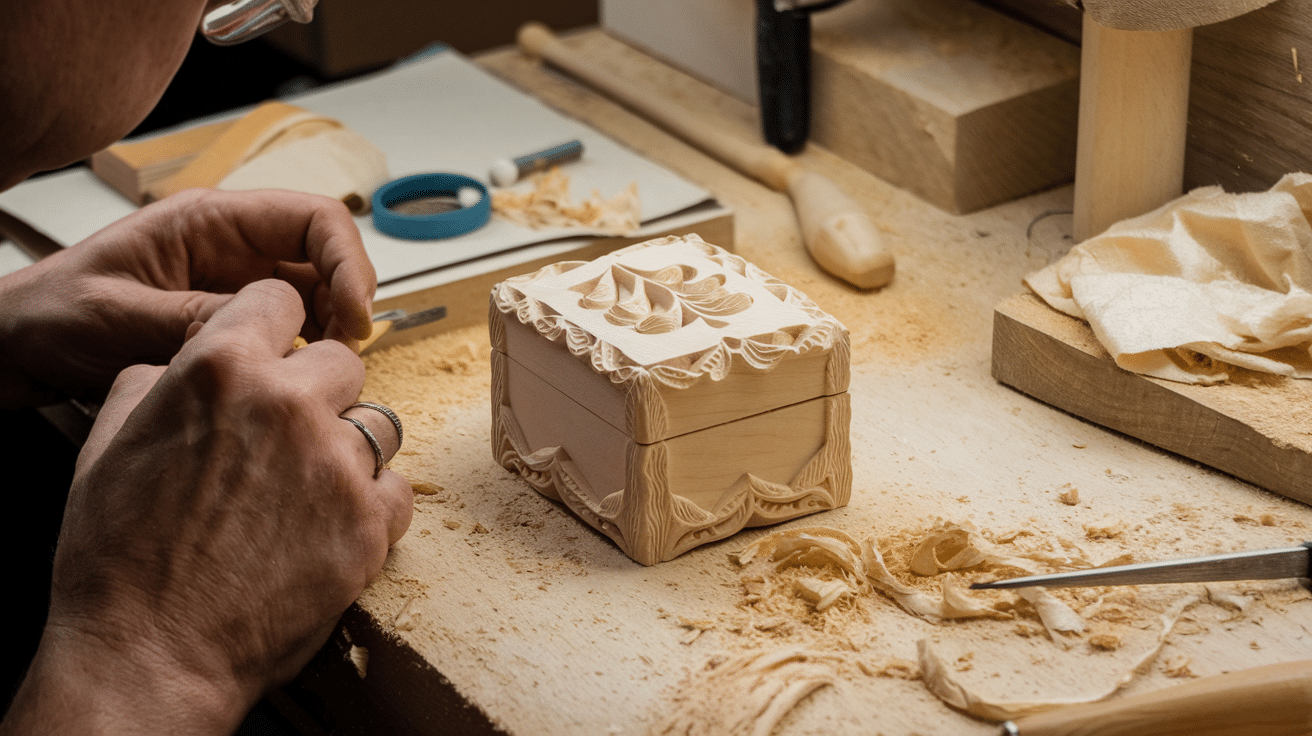
Adults can get into woodworking, creating small sculptures or practical objects like jewelry boxes or even furniture. This hands-on activity teaches patience, precision, and craftsmanship.
It also gives adults the chance to develop practical skills that can be used to make functional art pieces
20. Art Journaling
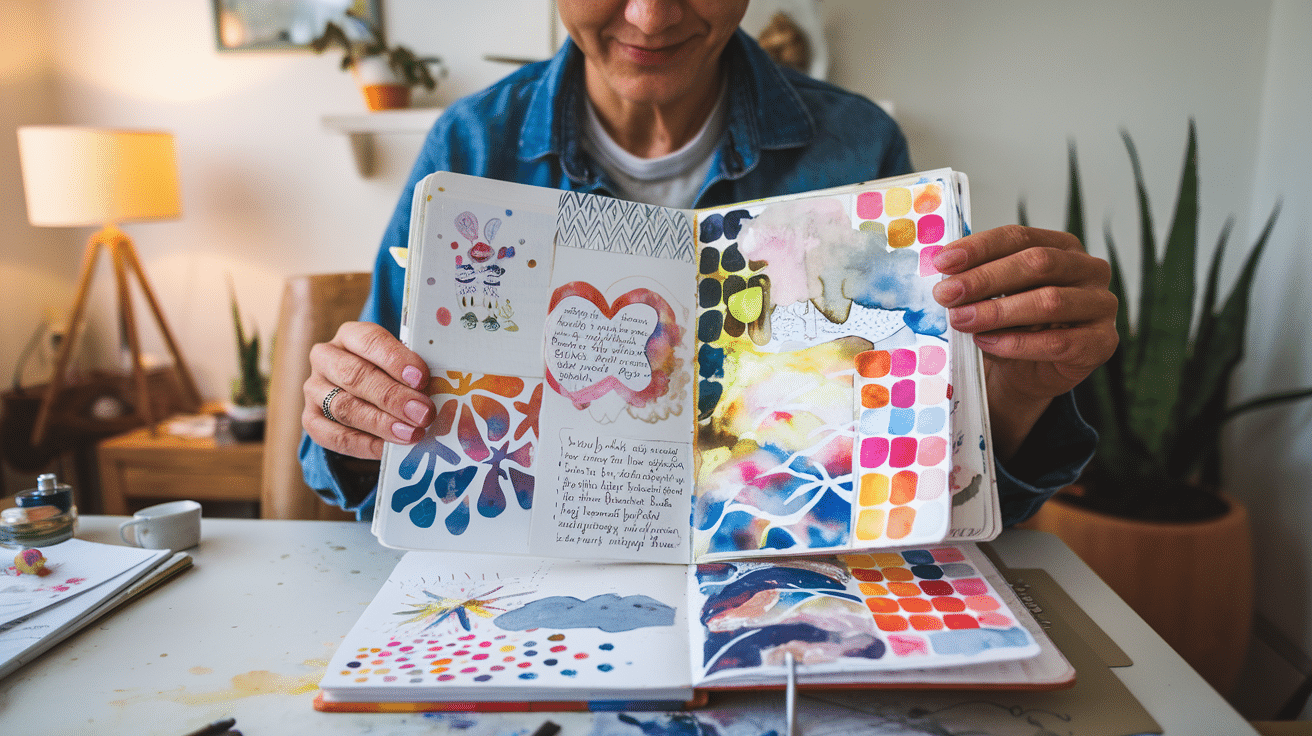
Art journaling combines drawing, painting, and writing. Adults can use a journal to express their thoughts, emotions, and creativity in any way they choose.
It’s a great way to document personal stories while exploring different art forms. Art journaling allows adults to reflect on their experiences and act as a creative therapy tool to work through emotions.
Fun Group Art Activities
Group art activities bring people together, whether it’s for a fun party, team-building event, or community project.
These activities are perfect for collaboration and creativity. Here are some ideas:
21. Collaborative Mural Painting

Group members can work together to create a large mural or painting. Each person adds their own section to the piece, contributing to a shared vision.
This fosters teamwork and creative expression. It also allows for a vibrant display of collective creativity that can be proudly showcased for others to admire.
22. Group Collage
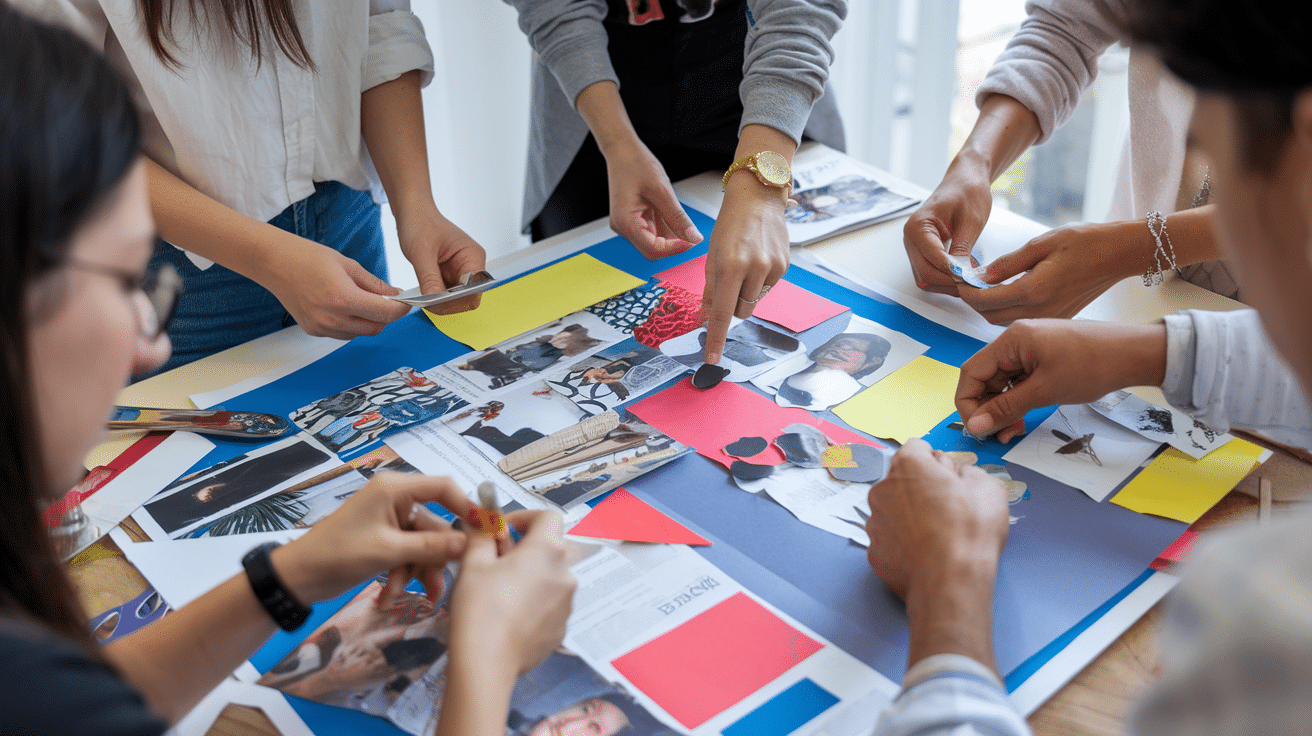
Each person can contribute a piece to a collaborative collage using magazines, newspapers, and other materials. This can be a great project for a group with diverse interests or to represent a community’s shared values.
The final result becomes a unique and colorful representation of teamwork that celebrates diversity and individual creativity.
23. Clay Pottery Workshop
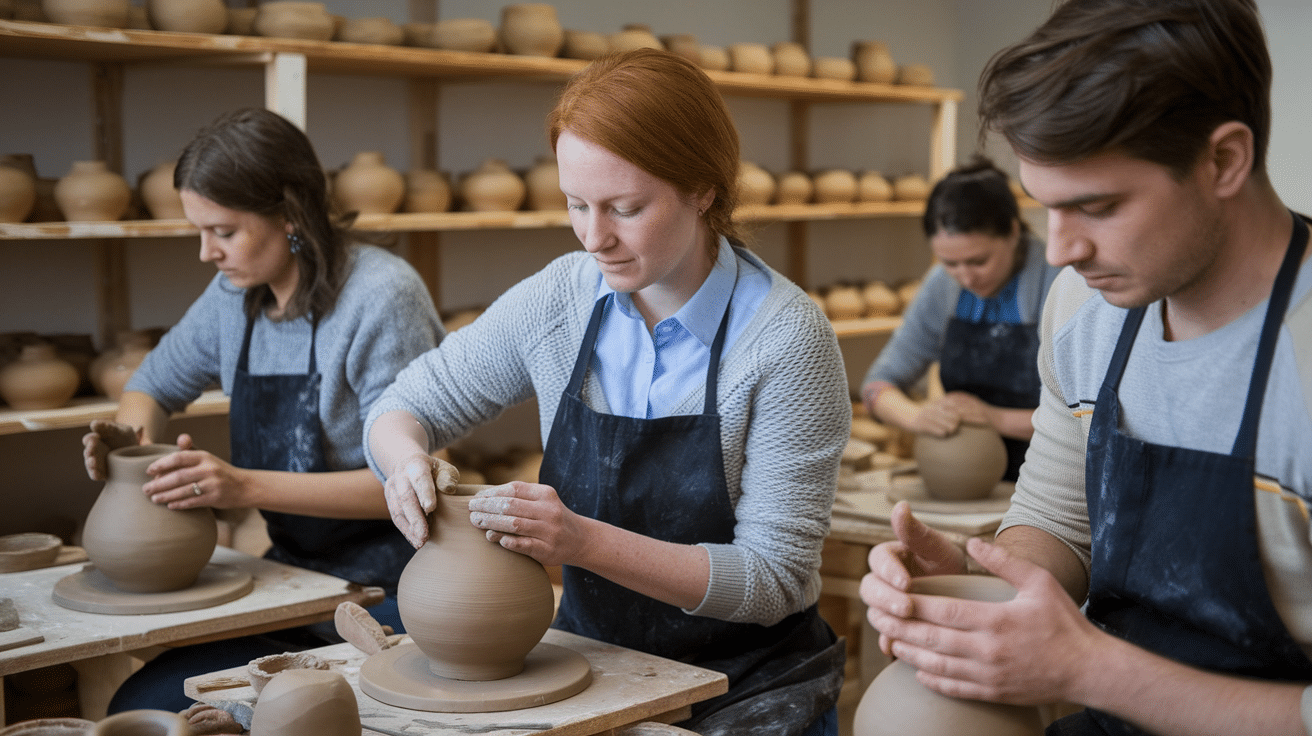
Invite a group to participate in a group pottery project where everyone makes their own piece or works together to build a large sculpture.
This hands-on activity promotes teamwork and patience. As participants mold and shape their creations, they build lasting memories and friendships through shared creative experiences.
24. Art Show or Exhibition
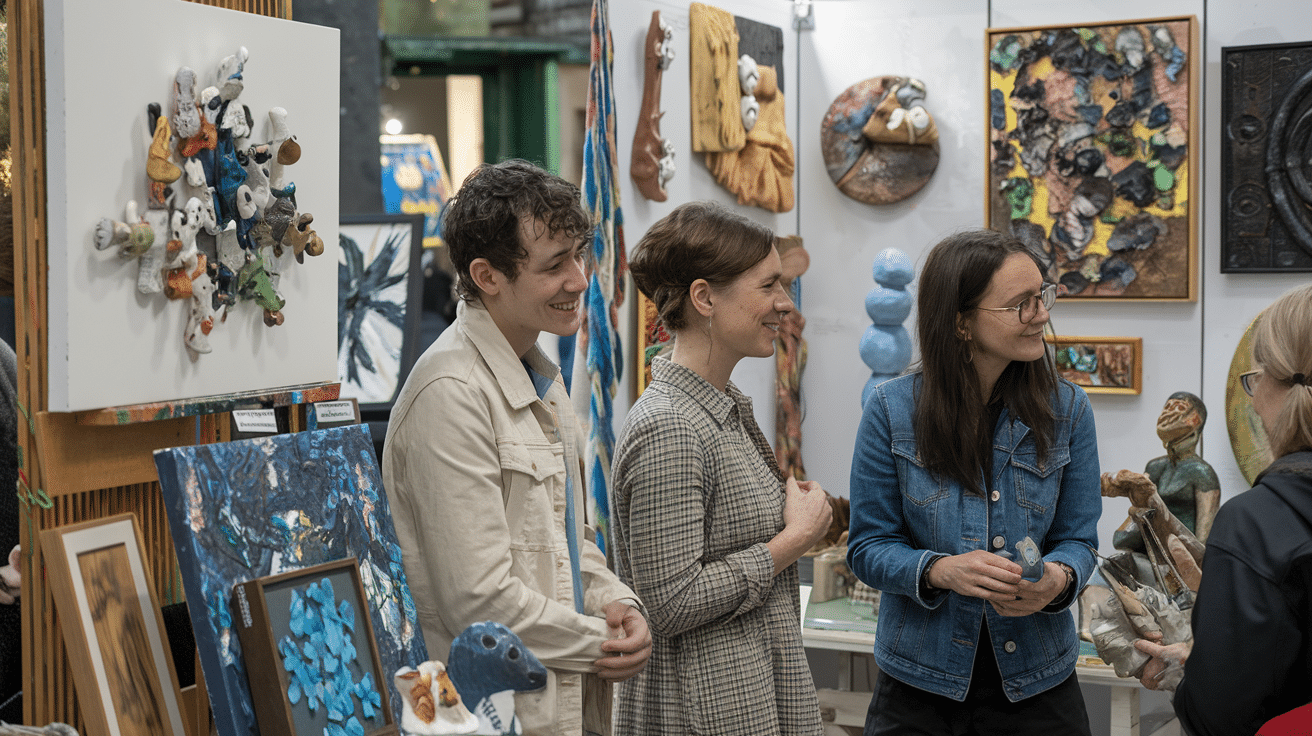
Organize a small art show or exhibition where each participant creates a piece to display. This event can showcase individual and group work and is a great way to encourage people to share their creativity.
It also provides everyone a sense of accomplishment and recognition, building confidence in their artistic skills.
25. DIY Vision Boards

A group of people can create individual or collective vision boards that reflect their goals, dreams, and inspirations.
Participants can use magazines, images, and words to express themselves visually, helping to focus on future aspirations.
More Fun and Unique Art Activities to Try
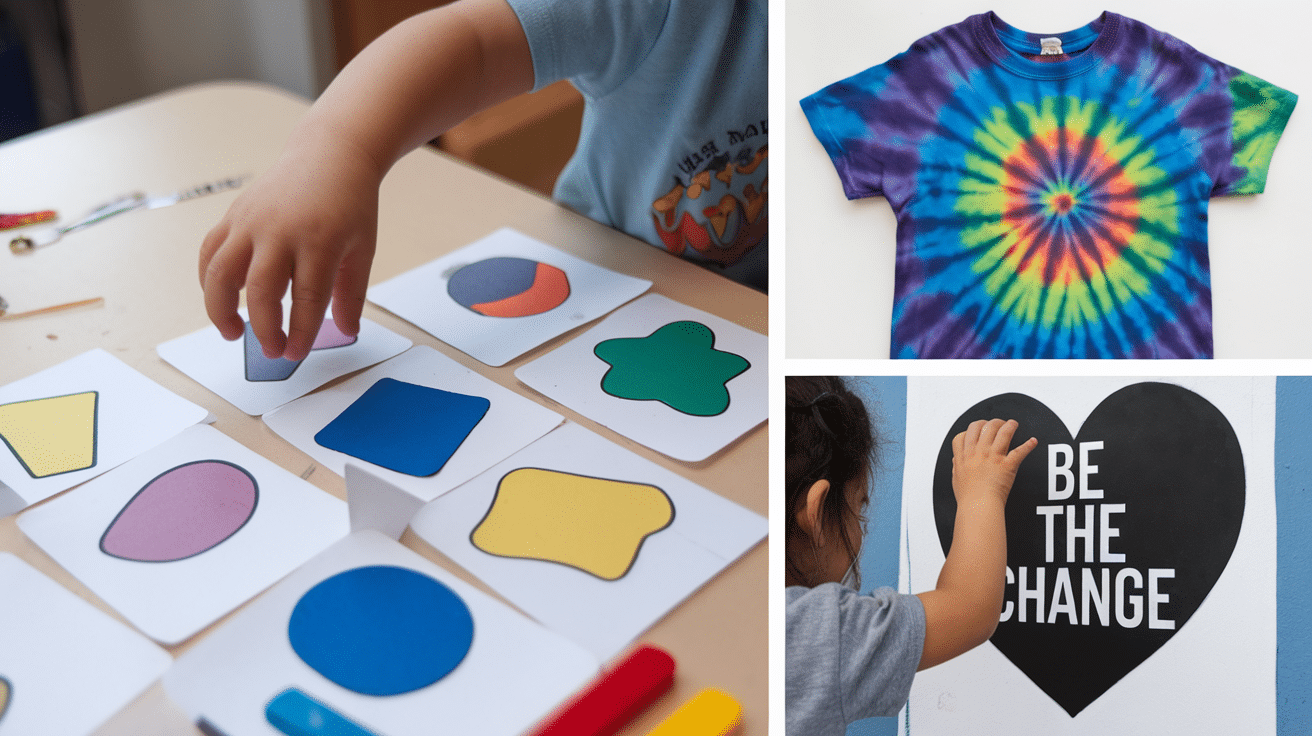
26. Shape Sorting Art: Use various shapes and have kids create pictures or patterns by sorting them.
27. Paper Plate Masks: Create fun masks using paper plates, markers, and decorative materials.
28. Bubble Wrap Printing: Paint bubble wrap and press paper on it to make textured prints.
29. Salt Painting: Paint with watercolors and sprinkle salt on wet paint to create interesting textures.
30. Fruit and Vegetable Stamps: Use cut fruits or veggies as stamps to make prints.
31. Paper Bag Puppets: Decorate paper bags to make fun character puppets.
32. Origami: Teach kids how to fold paper into different animals or objects.
33. Suncatchers: Use tissue paper or colored plastic to create window suncatchers.
34. Paper Weaving: Create woven designs with paper strips for a textured, colorful result.
35. Tie-Dye T-shirts: Use fabric dye to create fun patterns on plain white T-shirts.
36. Graffiti Art: Create street-art-inspired designs using spray paint or markers.
37. Digital Collage: Use apps or software to create collages with photos and digital art.
38. Watercolor Portraits: Create expressive self-portraits using watercolor paints.
39. Stencil Art: Use stencils to create detailed art with spray paint or colored pencils.
40. Abstract Expressionism: Create abstract art using bold colors and brush strokes.
41. Mandala Coloring: Color intricate mandala designs to relax and focus the mind.
42. Pottery Painting: Paint pre-made pottery pieces with intricate designs.
42. Fabric Painting: Paint on canvas bags, shoes, or clothes for a personalized look.
43. Resin Art: Create colorful designs using epoxy resin and different pigments.
44. Stencil Wall Art: Create custom wall art with stencils and acrylic paint.
45. Rock Painting: Gather smooth rocks and have each person paint their own design.
46. Nature Sculpture: Collect sticks, leaves, and rocks to build a group sculpture.
47. Photo Booth Props: Create fun photo booth props like hats, glasses, and mustaches out of paper and fabric.
48. Group Collage of Dreams: Create a giant vision board with group contributions.
49. Paint by Numbers Together: Set up a large canvas with paint-by-numbers for a group to work on together.
These activities encourage creativity, teamwork, and exploration while ensuring that everyone has fun!
Helpful Tips for Successful Art Activities
Whether you’re working on art projects with kids, teens, or adults, these helpful tips will make sure your activities are fun, engaging, and easy to follow:
1. Keep Supplies Simple: Start with basic materials like paper, markers, pencils, crayons, and scissors. Simple supplies help make any art project easy to set up, especially if you have limited time or resources.
2. Encourage Creativity, Not Perfection: Art is all about self-expression and creativity, not perfection. Remind participants that there’s no right or wrong way to create art.
3. Set Up a Comfortable Workspace: Make sure the art space is comfortable and free from distractions. Use newspapers or plastic sheets to cover tables to keep things clean.
4. Keep Instructions Simple: Keep instructions clear and short when explaining activities. Break down the process into easy steps, and use visual examples when possible.
5. Give Everyone Plenty of Time: Some people may take longer to finish their projects, so be sure to allow enough time for everyone to complete their work at their own pace.
6. Provide Inspiration: Sometimes, people can get stuck or unsure about what to create. Show examples or provide inspiration—like images of nature, famous art, or fun themes.
7. Try New Techniques: Don’t be afraid to experiment with different materials or styles. Try something like watercolors, clay modeling, or digital drawing to keep things fresh and interesting.
These tips will help make art activities smooth, fun, and stress-free for everyone involved. Whether you’re working with kids or adults, focusing on creativity and enjoyment will ensure that every art project is successful.
Conclusion
Art activities are a wonderful way to encourage creativity, express emotions, and have fun. Whether you’re a child, teen, or adult, there are endless possibilities to explore through art.
By following simple tips like keeping supplies basic, encouraging creativity over perfection, and setting up a comfortable workspace, you can make any art activity enjoyable and easy to manage.
Remember, the goal of any art activity is not just the final result but the process of creating and having fun. Art helps us think differently, solve problems, and express ourselves in new ways.
Frequently Asked Questions
What age groups can participate in art activities?
Art activities are great for all ages! Different activities can be adapted for children, school-aged, teenagers, and adults.
How can I make sure my art activities are fun for everyone?
Focus on creativity, not perfection! Encourage people to experiment and make mistakes. Give clear instructions, but also allow room for everyone to add their personal touch to the project.
How long should an art activity last?
The length of an art activity can vary. For kids, 30 to 60 minutes is usually a good timeframe, while for teens or adults, you can extend it up to 1.5 to 2 hours, depending on the project’s complexity.
Are there any online resources for art activities?
Yes! Many online resources, including tutorials, video lessons, and free printables, can guide you through various art activities. Websites like Pinterest, YouTube, and art blogs have plenty of ideas.


